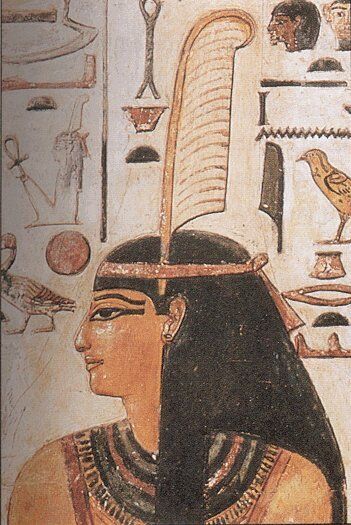The concepts covered in this topicsheet go beyond those seen in secondary school. It is intended as a supplement for those who are curious to find out more.
The Nile civilisation was born around 5,000 years ago and lasted until the beginning of the Christian era (birth of Christ) on the lands of modern-day Egypt, along the banks of the famous Nile River. The Nile civilisation owes its survival to the river, which created a narrow strip of fertile land on either side of its banks. The Nile stretches for some 6,600 km and rises in the mountains of Ethiopia. It flows from south to north, subdividing into smaller rivers that form a delta before emptying into the Mediterranean Sea.
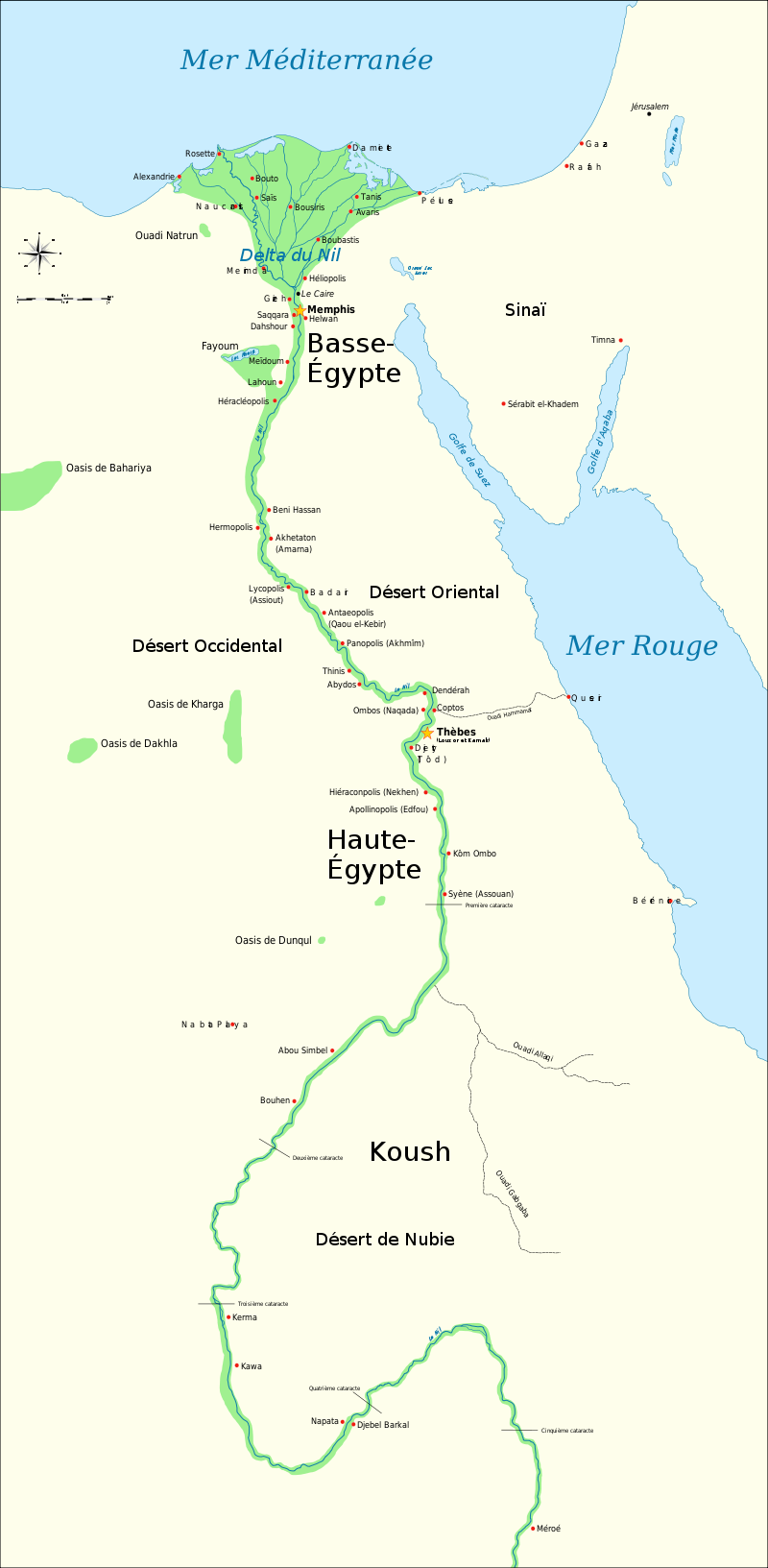
The Nile (Egypt)
*Note: Image in English coming soon!
The secret of such rich soil on the banks of the Nile lies in the phenomenon of high water, which occurs every rainy season. A flood is a rise in the water level of a river or stream, bringing rich nutrients to the flooded land. When the water level falls, only the water recedes. All the rich, nutritious substances penetrate the soil and fertilise it.
In ancient Egypt, the vast majority of people living along the Nile practised agriculture. They cultivated many kinds of fruit and vegetables. Like the Mesopotamian civilisation, the Nile civilisation was able to take advantage of the river's water by digging canals and irrigating land a little further away from the Nile.
Writing appeared in Egypt to meet the needs of society. It was used for state administration, religion and also to highlight feats of arms and the great moments in the reign of kings. It was also used for diplomacy between states, as can be seen from the Treaty of Qadesh.
This treaty is the earliest known peace treaty. It was signed in 1259 BC between the pharaoh Ramses II and the Hittite king Hattousil III. This treaty put an end to a war lasting more than 17 years. The treaty was written in the official language of Babylon at the time and engraved on a silver plate. It was copied onto a clay tablet found in a village in the early 20th century.
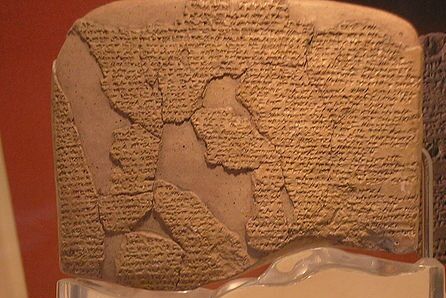
Copy of the Treaty of Qadesh
Ancient Egypt has one very special feature: hieroglyphs. This form of writing became established almost at the same time as cuneiform writing. The latter appeared around 6,000 years ago in Mesopotamia. Hieroglyphic writing was used for more than 3,000 years. Its signs are drawings that refer to everyday objects, animals and plants. However, the use of hieroglyphs was limited to religious texts, official inscriptions, funerary inscriptions and formulas for offerings to the gods or the pharaoh.
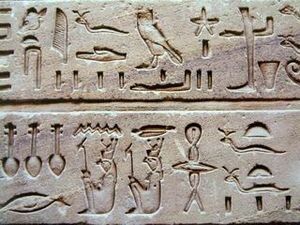
Images of hieroglyphs
Ancient Egyptian writing was made up of three types of sign: pictograms (stylised drawings representing beings or objects), phonograms (representing sounds) and determinatives (indicating the category of an object). Writing was read from right to left, and meaning was given by the orientation of human or bird heads.
The Nile civilisation saw its form of writing change: hieroglyphic writing gave way to hieratic writing, a simplification of the ancient hieroglyphs carried out by the scribes. Hieratic writing was in turn transformed to create demotic writing, which is a simplified form of hieratic writing. The need to simplify writing stemmed from the fact that scribes were producing more and more documents. Demotic writing is simpler and faster, which gives it an advantage.
The ancient Egyptian civilisation did not see its writing style change overnight. There were periods when two or three writing styles coexisted.
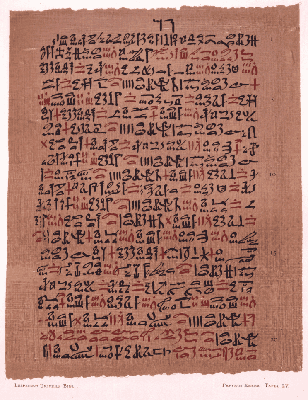
Hieratic writing
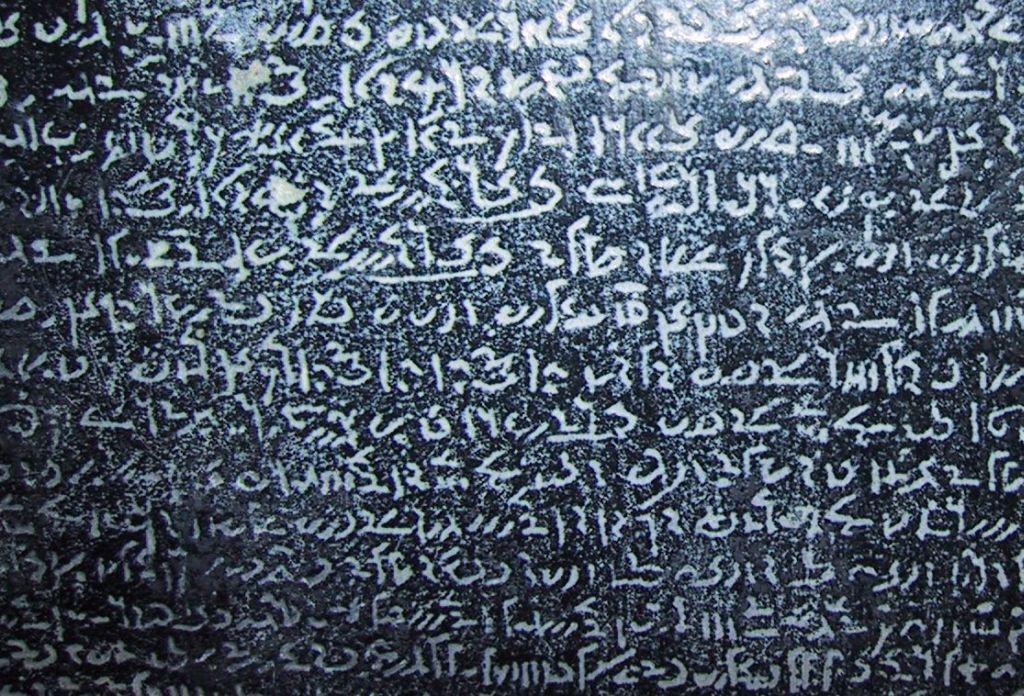
Demotic writing
In 1799, while working on the walls of an ancient fortress in Turkey, a young French engineer discovered a stone over a metre high engraved with strange inscriptions.
The stone, discovered in the village of Rachïd (which means rosetta), was studied in order to decipher the writing. It was another Frenchman, Jean-François Champollion, who was finally able to translate the text after eight years of studying the stone. The inscriptions on the Rosetta Stone are in fact the same text written in three different writing systems: hieroglyphs, demotic and Greek. The text is a decree (an ordinance) ordering the erection of statues in the temples.
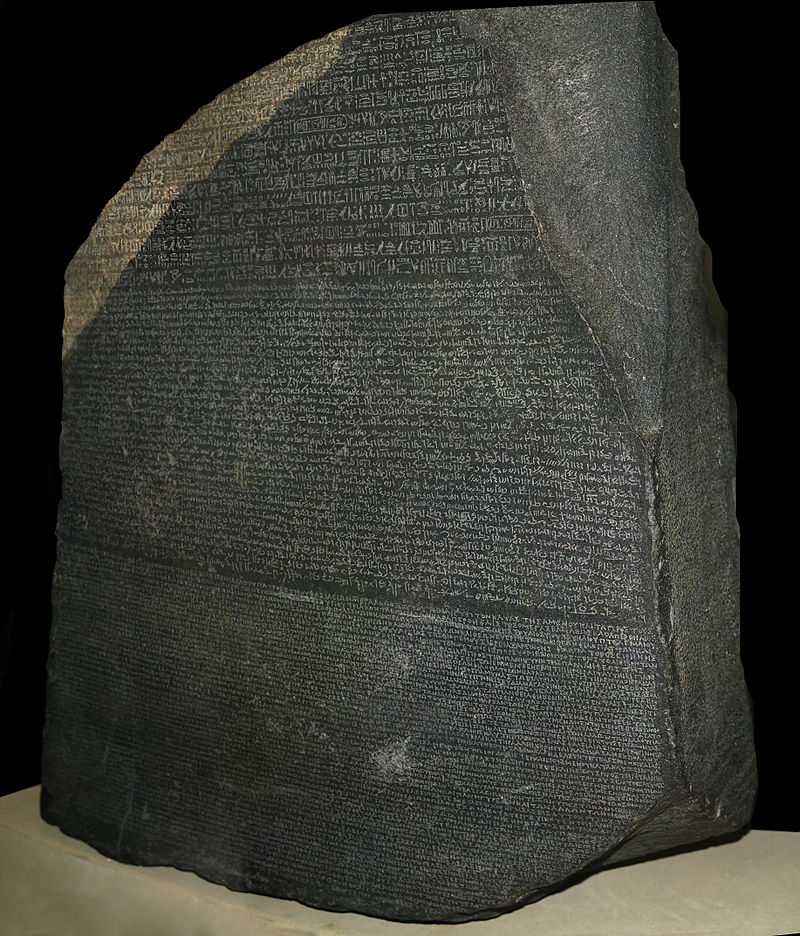
The Rosetta Stone
The Nile civilisation was one of the most organised societies of its time. Its disciplined, creative and hard-working commoners or the people created magnificent monuments, including one of the best known: the Pyramid of Egypt. The pyramid was in fact a great centre of worship for the pharaoh, symbolising his power and wealth. Building a pyramid required the mobilisation of all the workers in society. The pyramid served as the pharaoh's tomb on his death.
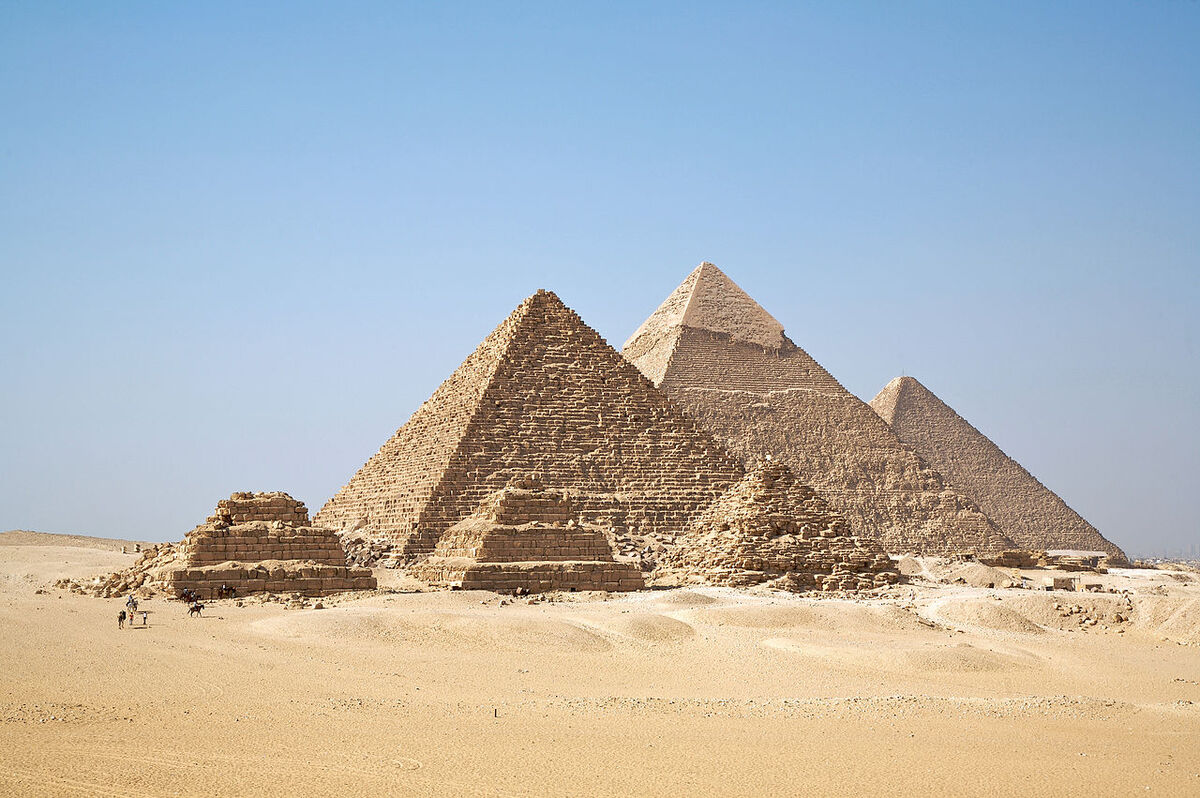
Pyramids of Giza (Egypt)
Ancient Egypt covers a period of almost 5,000 years, from the beginning of writing (the end of prehistory) to the beginning of the Christian era (the birth of Christ). This period was characterised by great periods when the great kings of Egypt, known as pharaohs, reigned.
A dynasty is a succession of sovereigns from the same family.
The Nile civilisation was ruled by several pharaohs. The pharaoh was considered to be a demigod: he was the supreme head of society, the head of the administration, the head of the armies, the supreme priest and the chief judge. Several pharaohs succeeded each other in the course of a dynasty (a generation of kings from the same family).
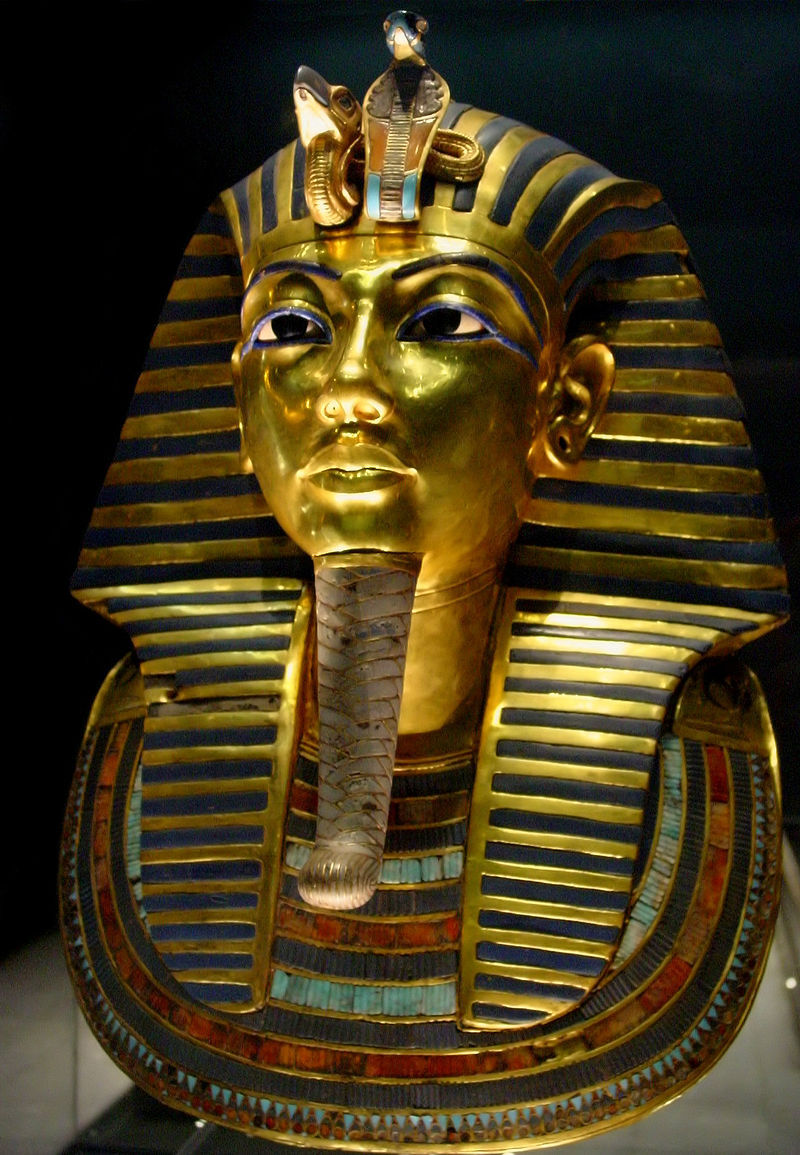
Pharaoh Tutankhamun
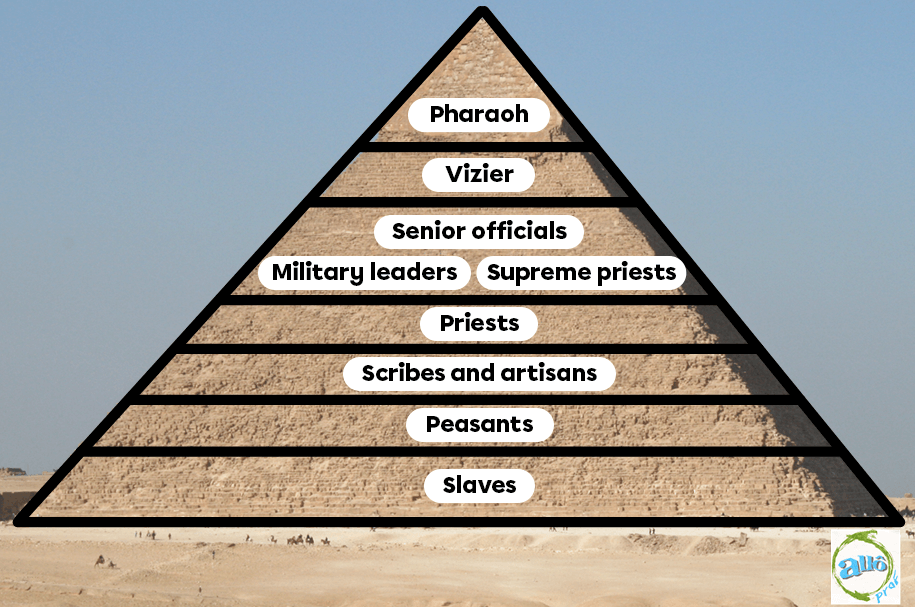
The social hierarchy
The Nile valley is very fertile and rich. The land can be farmed when the river rises and when it recedes (when the water level falls). When the river recedes, the water recedes, leaving behind nutrients that can be used to fertilise the soil. Most of the inhabitants of ancient Egypt were farmers, but there were also artisans, doctors, architects and so on.
In order to communicate and exchange goods over long distances, the inhabitants travelled by boat, the Nile being the best means of transport. Navigation enabled communication between northern and southern Egypt. The Nile made it possible to reach all the villages located close to the river. The inhabitants created artificial waterways to link the river with the temples and pyramids.
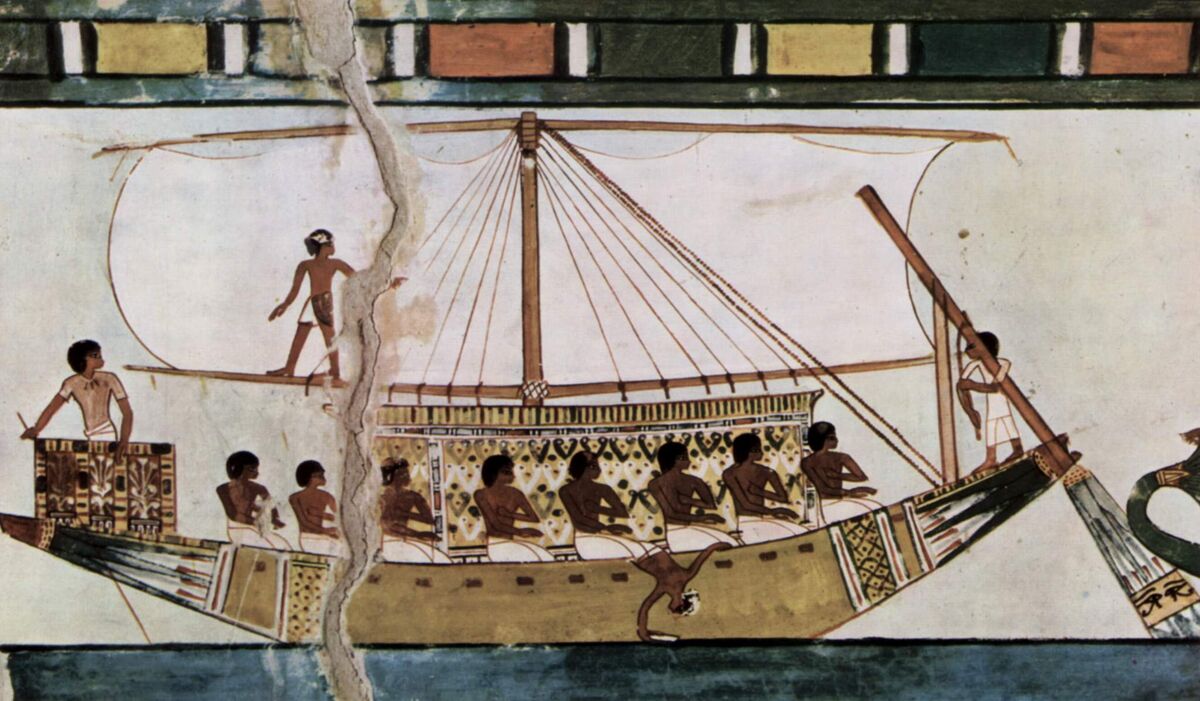
Tall Ship of the Nile Valley
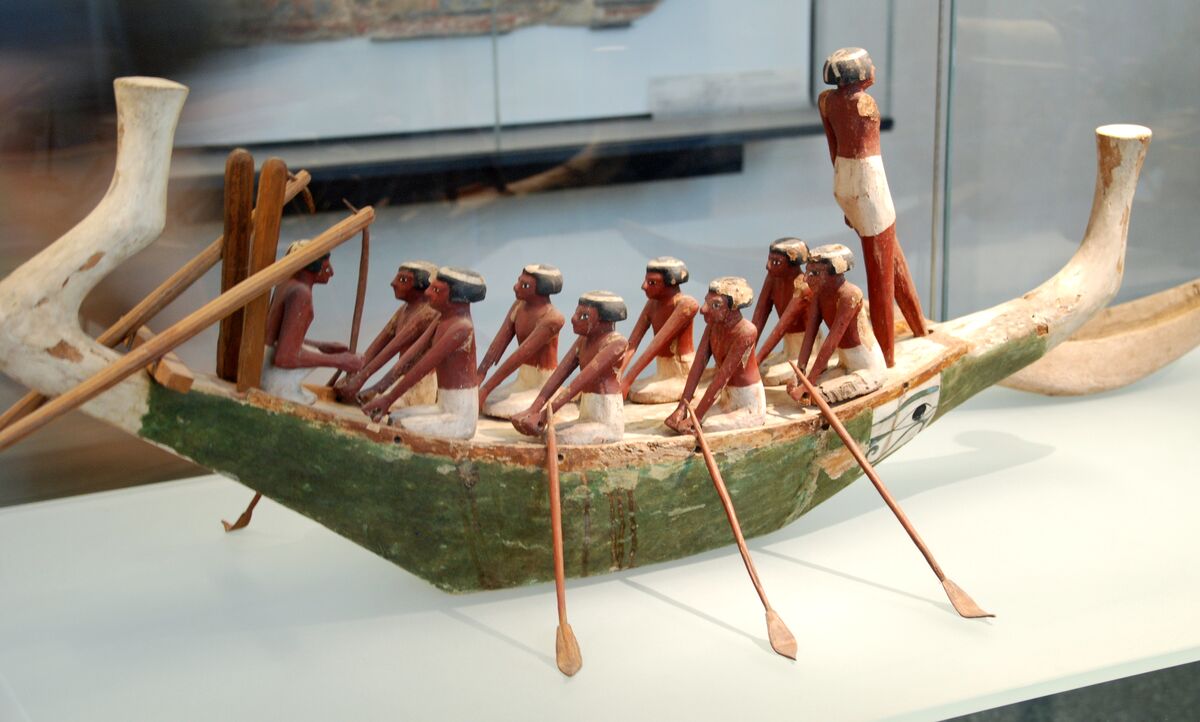
Model of a small boat that navigated the artificial waterways of the Nile
All the laws and the justice system of ancient Egypt came from the divinity Maat, the goddess of order, balance, peace and justice.
It was the pharaoh who was responsible for preserving this peace and order on Earth. His senior officials, the viziers, acted as judges. They listened to complaints and arbitrated disputes. The viziers settled cases relating to crimes, but also disputes over property, unpaid loans, disputes between neighbours and so on.
Convictions had repercussions not only for the guilty party, but also for their entire family. This meant that his family could also be punished. For example, if the punishment was extradition (i.e. being hunted out of the kingdom), the whole family had to leave. If the offender had to repay a loan, the family could be ordered to do so in his place if he was unable to do so.
Ancient Egypt was a civilisation that evolved considerably during its existence. Even today, it remains an example to follow in terms of organisation and know-how in many areas such as architecture, agriculture, crafts and navigation.
The Egyptian religion is polytheist, meaning that there are several gods. In fact, there are several hundred of them. Some gods and goddesses have a human form, like Osiris and Isis, and others have a half-human, half-animal form, like Horus and Thoth.
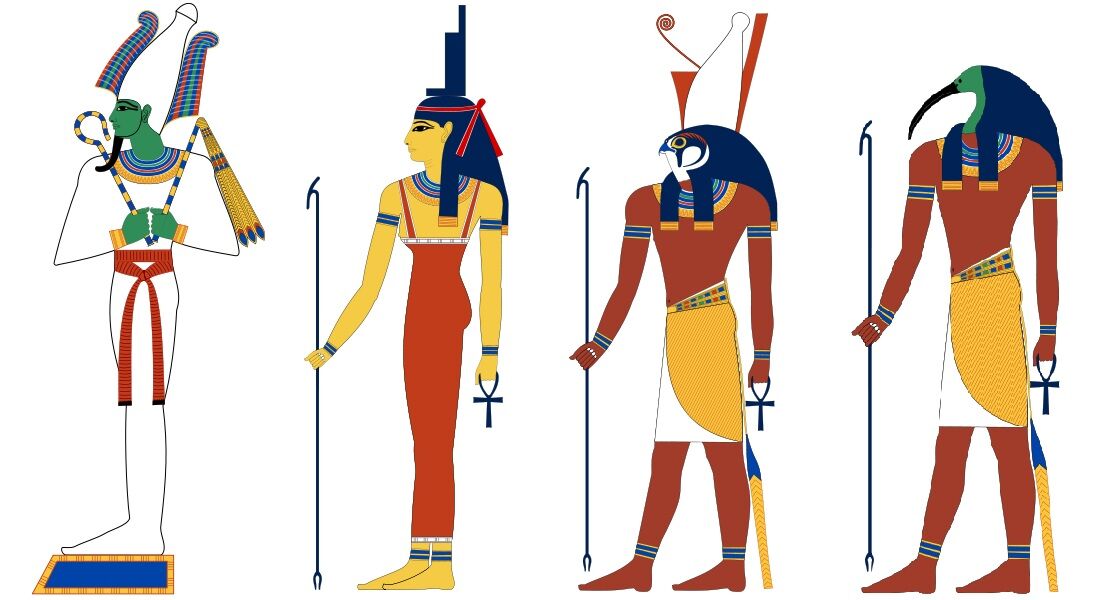
From left to right: Osiris, Isis, Horus and Thoth
Mummification was part of Egyptian funeral rites. They believed in life after death, hence the importance of preserving bodies properly. Mummification involved several stages, during which the body of the deceased was washed and then emptied of its organs, which were placed in vases known as canopic jars. The body is then dried and wrapped in bandages. Finally, the body was placed in several successive sarcophagi. The mummified pharaohs were then taken to their final resting place, the pyramid.
Originally, mummification was reserved for pharaohs and queens, but over time the practice was extended to the lower classes of society (nobles, peasants, etc.).
An obelisk is a large block of carved granite that points skywards. For the Egyptians, it was a religious monument, often found near temples. The obelisk is one of the symbols of Ra, god of the Sun. It represents a frozen ray of sunlight, because this is the form in which men are said to have seen Ra appear.
A well-known obelisk is the one found in Paris, on the Place de la Concorse. It was given to France by Egypt in 1831. It previously adorned the entrance to Luxor Temple in Thebes.

The Concorde obelisk
